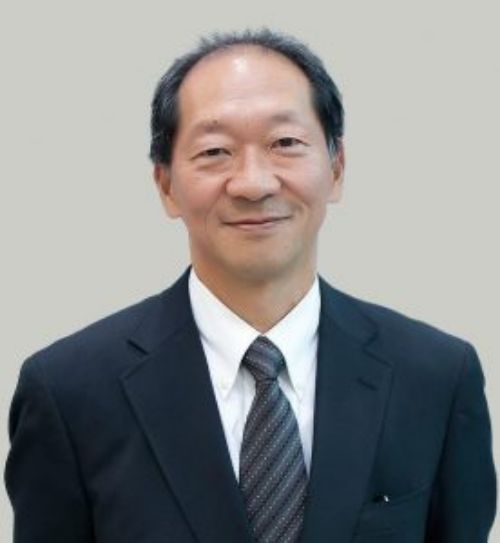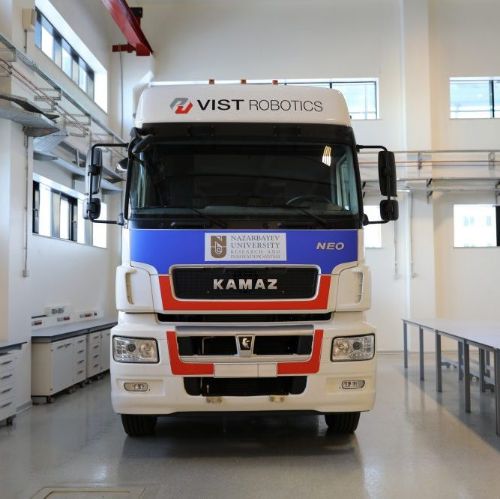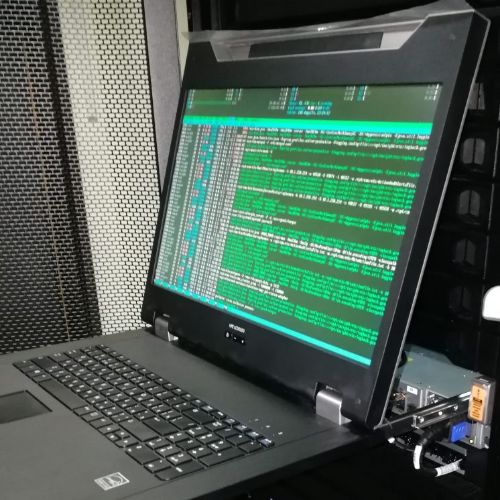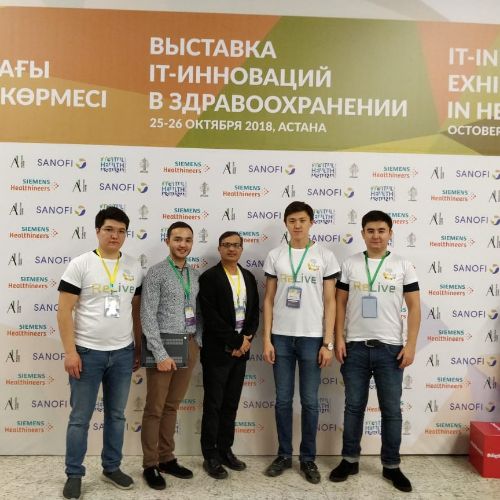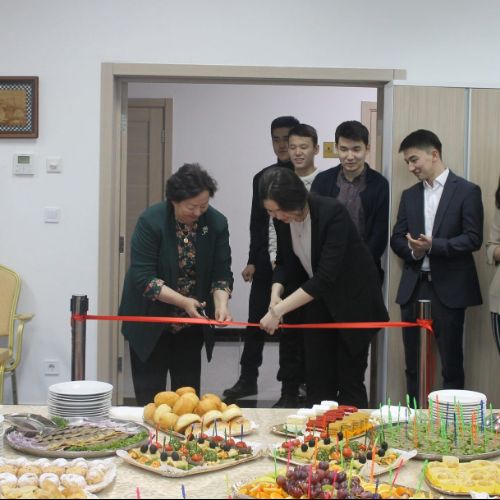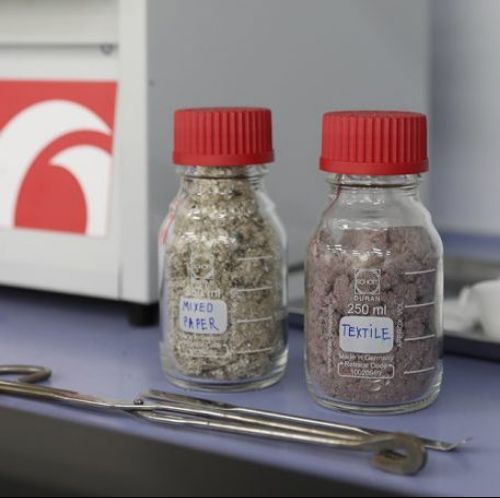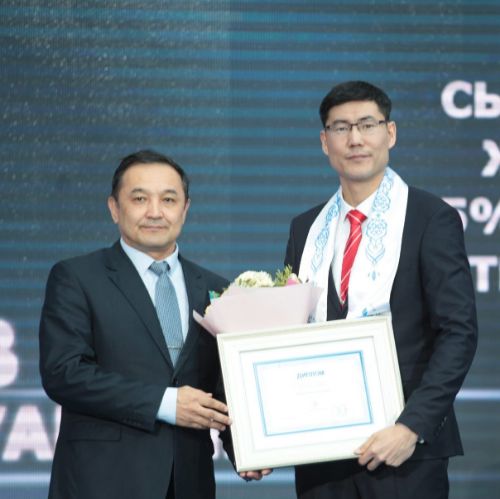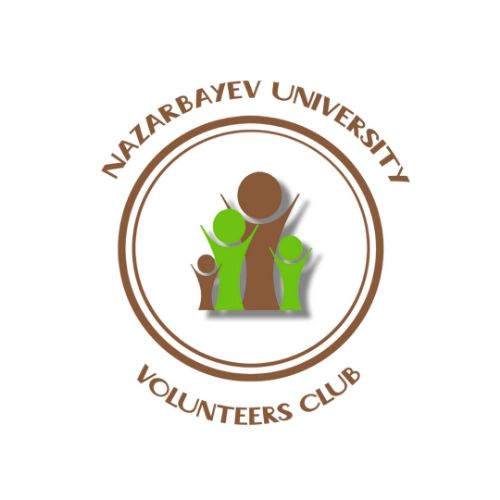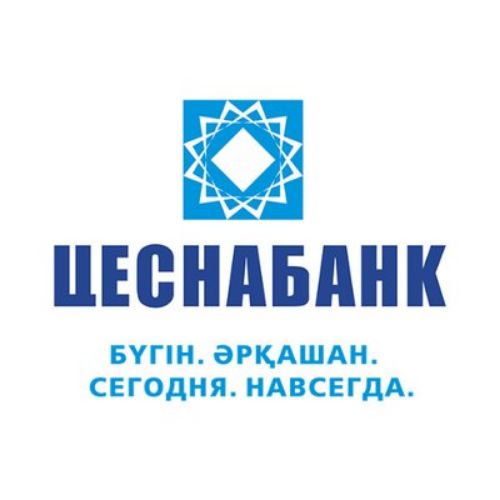
NU MAGAZINE
February 2019
CONTENTS
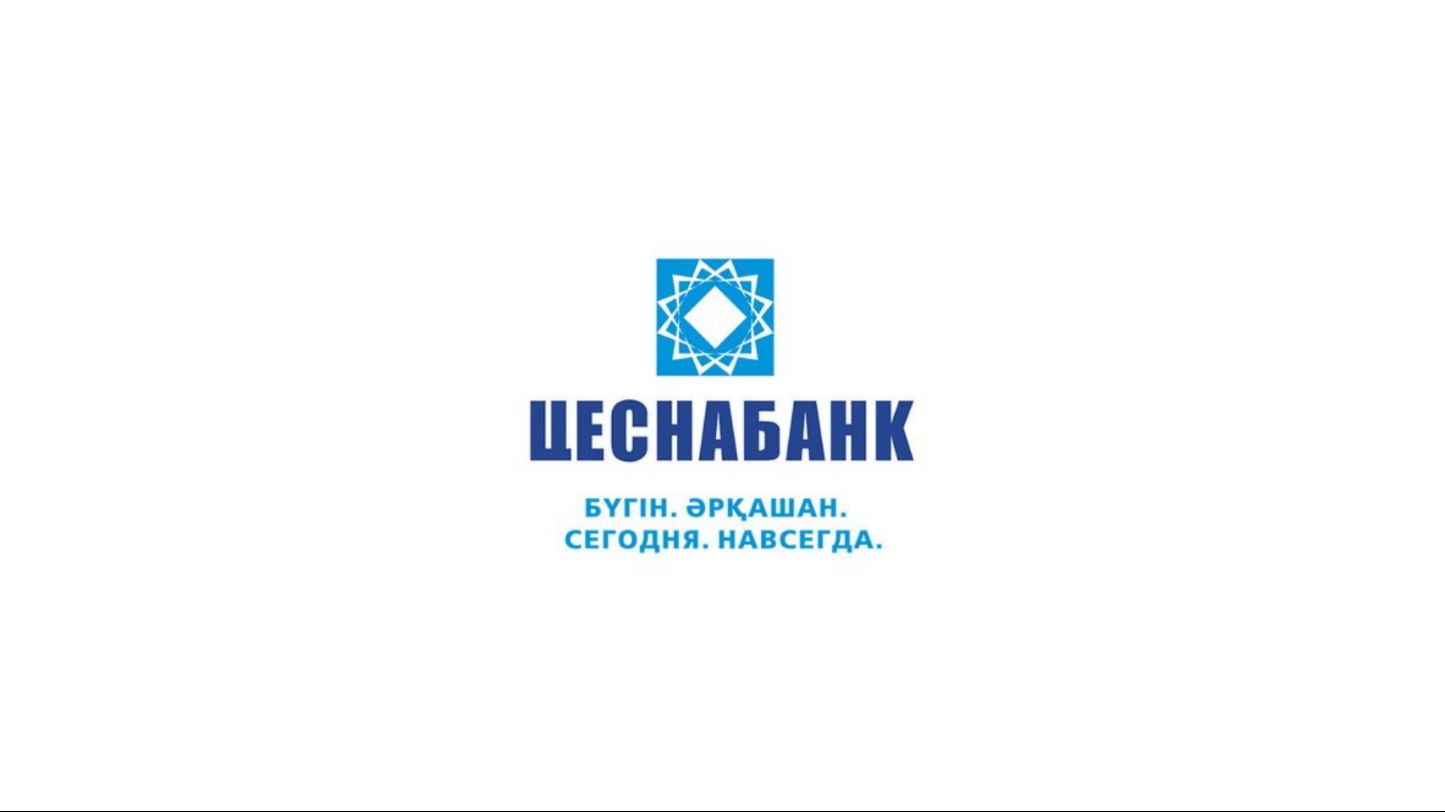
The Investment Company of the Group of the AOE «NU», «NIS» and «NF» has acquired 99.5% of «Tsesnabank» JSC shares
The Investment Company of the Group of the Autonomous Organizations of Education Nazarbayev University, Nazarbayev Intellectual Schools and Nazarbayev Fund has acquired 99.5% of Tsesnabank JSC shares on February 6, 2019
First Heartland Securities JSC (further – FHS), an investment division of the financial holding company under the Group of the Autonomous Organizations of Education Nazarbayev University, Nazarbayev Intellectual Schools and Nazarbayev Fund, has acquired Tsesnabank JSC in accordance with a Framework Agreement established between the Government of the Republic of Kazakhstan and prominent state holding companies, the National Bank of Kazakhstan (NBK) , the previous shareholder of Tsesnabank, and FHS.
Tsesnabank will serve as a key link in the Group’s investment architecture. The Bank will focus its efforts on developing services and products to meet the financial needs of the citizens of Kazakhstan as well as small and medium businesses. The Bank’s activities will be instrumental in implementing various initiatives to diversify and promote sustainable development of Kazakhstan’s economy.
The Group has set up structures such as endowment funds and financial services institutions in order to support the Group’s activities in accordance with advanced international practices. By acquiring Tsesnabank, opportunities to finance educational and scientific programs will be enhanced and general financial conditions of the Group improved. Importantly, a new institutional model that fosters collaboration between education and research on one side, and business on the other will now emerge; the Group has acquired an even more powerful tool to pursue its human capacity- building and social development mandates.
«Nazarbayev University – it not only embodies the best in global education and research, but is also key national project that contributes to the continuous rapid development of Kazakhstan, its institutions, economy and quality of life of the population,» says Shigeo Katsu, President of Nazarbayev University and Chair of the Board of Trustees of Nazarbayev Intellectual Schools.
With its foundation of outstanding professional expertise, and with the support of the NBK and the Government of the Republic of Kazakhstan, FHS pledges to develop Tsesnabank as a bank for the people of the country and small and medium businesses.
“Nazarbayev University will ensure transparent and effective management in the bank in accordance with leading world standards,” added Mr. Katsu.
Shigeo Katsu appointed the Chairman of the Board of Directors of Tsesnabank JSC
President of Nazarbayev University, Chair of the Board of Trustees of Nazarbayev Intellectual Schools and member of the Board of Trustees of Nazarbayev Fund Mr. Shigeo Katsu appointed the Chairman of the Board of Directors of Tsesnabank JSC.
Mr. Shigeo Katsu is President of Nazarbayev University, a position he has held since December 2010. Prior to that, over the course of a 30-year career at the World Bank, Mr. Shigeo Katsu led financial sector reforms on countries in Asia, Africa and Europe, held various Senior Management positions and served as Vice President for the Europe and Central Asia Region.
In addition to the above, Mr. Bekzhan Pirmatov has been appointed Chief Executive Officer of Tsesnabank JSC. Mr.Pirmatov is Former Deputy CEO of the First Heartland Bank JSC. Mr.Pirmatov has been working in the banking sector since 2004. He started his career as a leading specialist in the Office of Corporate Relations. Subsequently, he headed the divisions for working with corporate clients in local and foreign banks, such as Bank Caspian, JSC, Bank TuranAlem, JSC and SB HSBC Bank Kazakhstan, JSC and Kazkommertsbank, JSC. Prior to joining FHB, he was a Principal Banker at the European Bank for Reconstruction and Development (EBRD), where he was responsible for working with large corporate clients in the sectors of industry, commerce, agribusiness and natural resources. Mr. Pirmatov has extensive experience in corporate banking, risk management and project finance.
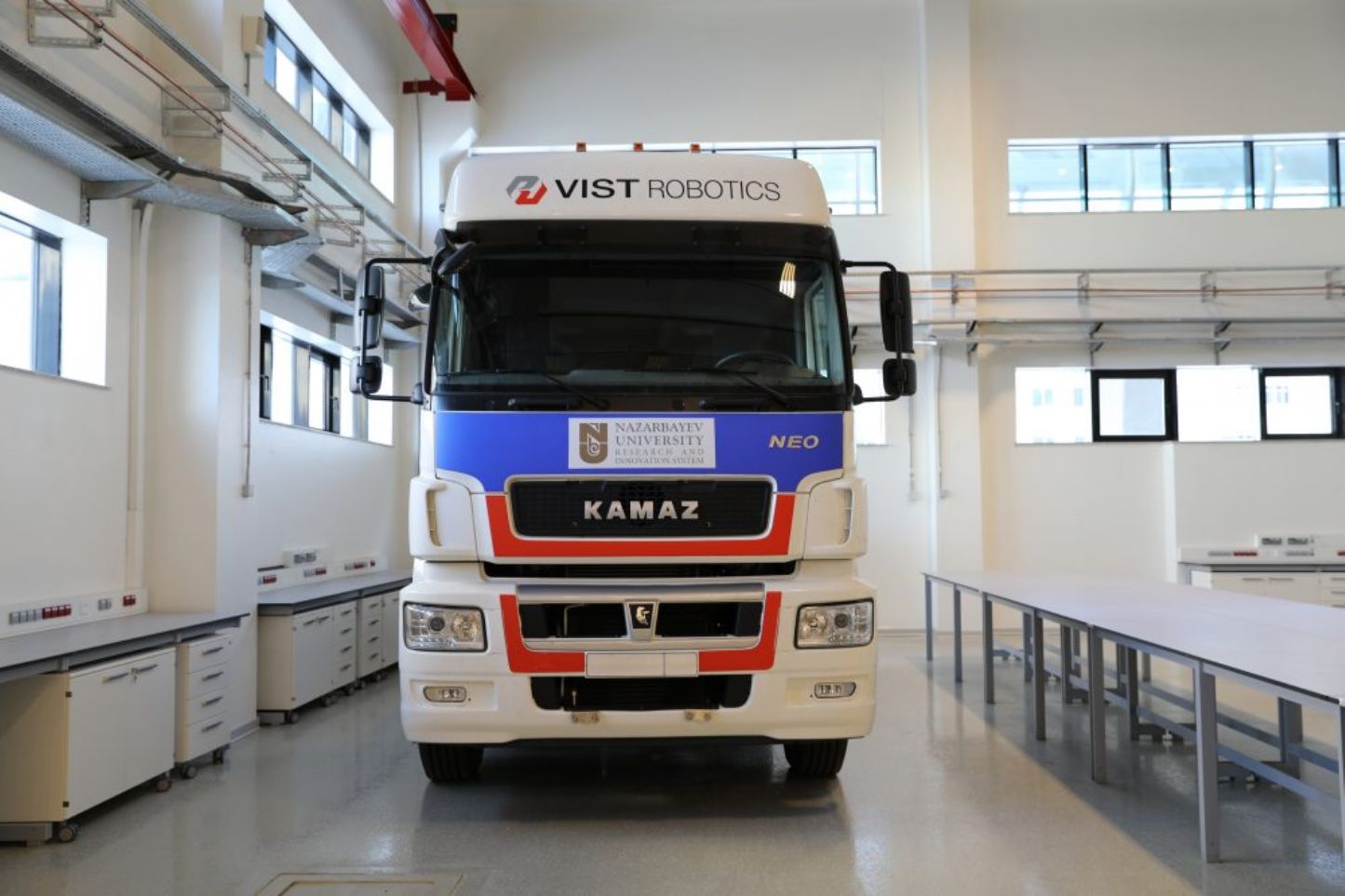
Nazarbayev University has launched the Kamaz Neo robot-assisted vehicle project
AOE “Nazarbayev University” (Kazakhstan) together with VIST Group JSC (Russia, Tsifra Group of Companies) and KAMAZ PJSC have started a project to create a Kamaz Neo tractor unit based robotic vehicle. The computer vision supported vehicle will recognize different objects – people, animals, road barriers, cones and autonomously recalculate the route with the consideration of the detour of these obstacles. Basing the design on a truck chassis means that these robot-assisted vehicles will be useful in a multitude of industries.
“The project will design a computer vision module for a KAMAZ 5490 Neo chassis based robot-assisted vehicle, the adaptation of a hardware and software complex, and the integration of an automatic planning and tracking system that takes into consideration the vehicle’s trajectory and potential road obstacles,” commented Artyom Fedotov, Head of the project from the VIST Group.
“We are managing the engineering operations for the adaptation and improvement of computer vision modules for the unmanned control of the Kamaz Neo vehicle. Together with the VIST Group specialists, who provide us with the necessary additional equipment and software, we have started the project, specifically the operations to introduce vehicle’s trajectory planning functions into software, generate vehicle control commands, to detect and recognize obstacles,” – Zhandos Yesenbayev, project manager from Nazarbayev University, Senior researcher at “National Laboratory Astana” PI, shared the work progress.
The project is planned to be completed in September 2019.
Note: the KAMAZ vehicle is owned by KAMAZ PJSC and has been transferred to Nazarbayev University for temporary free use for a period of 12 months.
KAMAZ-5490 is the main tractor unit, manufactured by the Kama Automobile Plant (KAMAZ). The KamAZ-5490 was designed to replace the 5460 series and create a flagship car for the fleet. It was presented in 2011 at the ComTrans exhibition. Mercedes-Benz Axor cab drawings produced since 2001 were purchased. The plant has stated that activities on the model production localization will, over time, bring its level to 60%.
Since the plant began operations, it has manufactured the frame and some elements of the chassis. The external plastic cab body kit, however, is produced completely by a Russian manufacturer. The truck is outfitted with tires bought from Nizhnekamskshina. Starting in 2017, the plant began pre-production of its own engines in the P6 series using almost 100 percent local components. This engine began to be mass produced in 2018.

NU launched a new computational system for genomic research and bioinformatics tasks solving
Researchers of the National Laboratory Astana at Nazarbayev University launched the first high-performance bioinformatics computational platform in Kazakhstan for dealing with complexity of “big genomic data” and solving problems in the field of bioinformatics.
– This platform uses “Qazaq symphony of bioinformatics” or Q-Symphony and other optimized bioinformatics methods to analyze large-scale human genomics data, to detect specific structural genomic variants, and to conduct complex comparative and population analysis. Previously it took up to two months to process one computational task, but now with Q-Symphony, it takes about seven days to complete this process! – commented Ulykbek Kairov, Leading researcher, Head of the Laboratory of Bioinformatics and Systems Biology, Center for Life Sciences, National Laboratory Astana.
For scientists and the research community of Kazakhstan, the data obtained using Q-Symphony will serve as the foundation for creating a reference database of genomic variants of Kazakh individuals and will have further applications in analyses of comparative population genomic variants described in the scientific literature. This computing platform makes it possible to more effectively apply the reference database of genomic variants in biomedical practice in order to evaluate new genetic variants in healthy individuals and patients with different pathologies within the Kazakh population.
In addition, this data can be used in medicine to improve the identification of diseases and select appropriate treatments. It is essential for medical professionals to understand all that they can about the genomic characteristics of the population because the presentation of diseases and the efficacy of different drugs can be related to genetics. This work can clarify the diagnosis of a patient with unclear etiology associated with human genetics, and can also be used in personalized medicine to identify genetic predispositions and prevent possible risks of developing pathologies, as well as to assess the effectiveness of different drugs depending on the patient’s genetic features.
The Q-Symphony system consists of four main nodes: an input or control node, a memory node, a network of computing nodes combined into one, and a storage node. All nodes are connected by a high-speed data exchange network Infiniband with a capacity of 100 Gb/s. The total capacity of computational nodes is 172 cores, 3072 GB of RAM and 198 TB of data storage.
Q-Symphony uses a special data caching system, with a volume of 3.2TB, which increases the computational speed of input-output data for individual tasks. The data is automatically transferred to regular disk drives. Moreover, the monitoring system provides convenient transparent display of resource loading and task execution in 3D visualization mode.
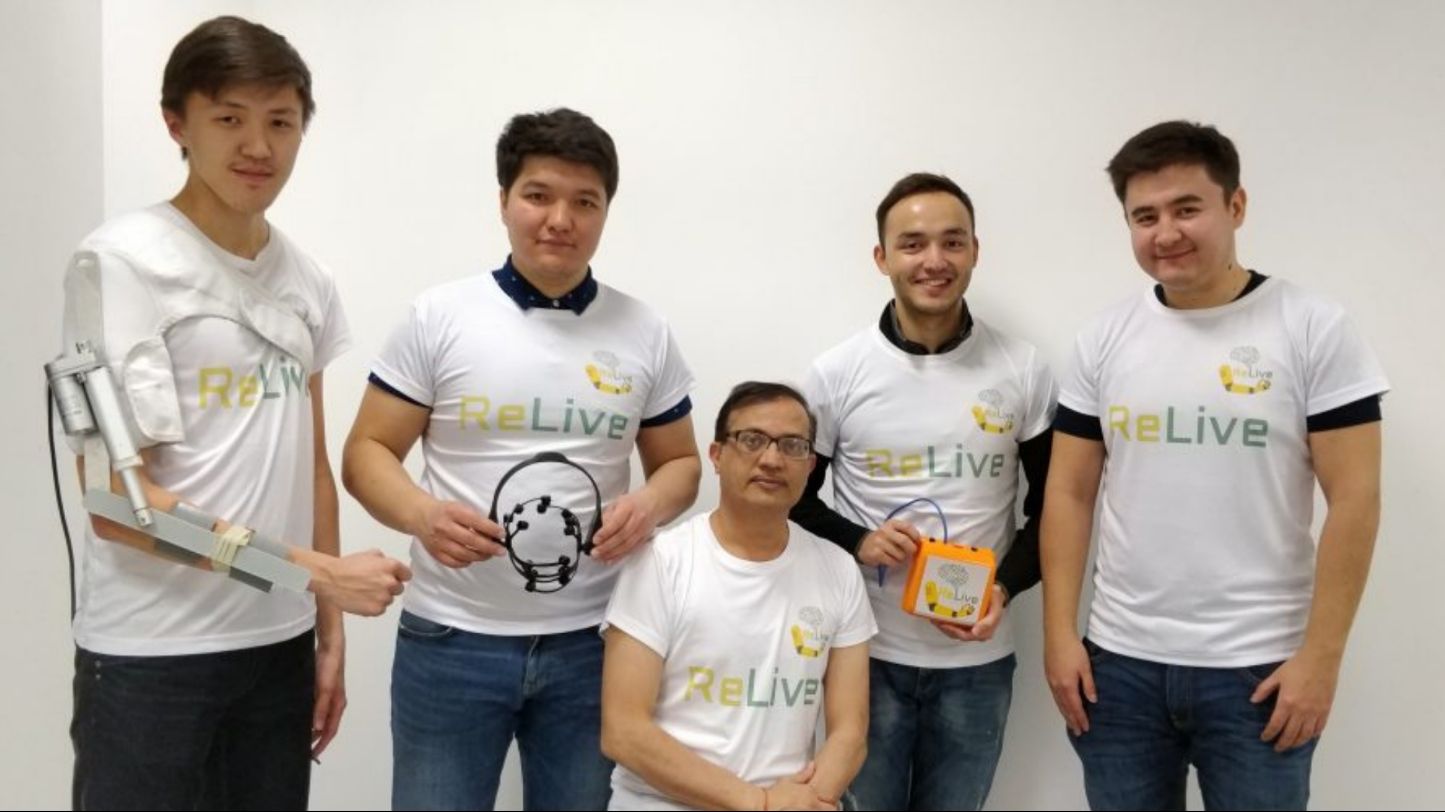
ReLive project will be presented at the UN exhibition
ReLive – Nazarbayev University’s scientific start-up project on the rehabilitation of stroke patients will participate at a special event hosted by the UN. The special event entitled “The Role of Assistive Technology in Accelerating Learning and Participation of Children with Disabilities” will take place in Geneva, March 7-8, 2019.
ReLive is an innovative solution for the rehabilitation of patients after a stroke, which includes equipment and software for reading and recognizing brain signals, a microcontroller, and an exoskeleton of the upper limbs. Brain signals are recorded by a mobile electroencephalograph, and then are sent to a computer. The system allows the patient to mentally manage the exoskeleton (artificial limbs). The use of this technology will improve the recovery process of patients. Researchers have done series of test-drives with the prototype and found that it is functioning properly.
The project was designed by scholars and students of Nazarbayev University, led by assistant professor Prashant Jamwal (School of Engineering) and Ph.D. student Beybit Abdikenov (School of Engineering). The team consists of the specialists in the fields of robotics, machine learning and artificial intelligence, and medicine: A. Kapsalyamov, B. Zholdaskhan, Z. Iklasov, A. Sharipov, and the neuropathologist R. Tautanova.
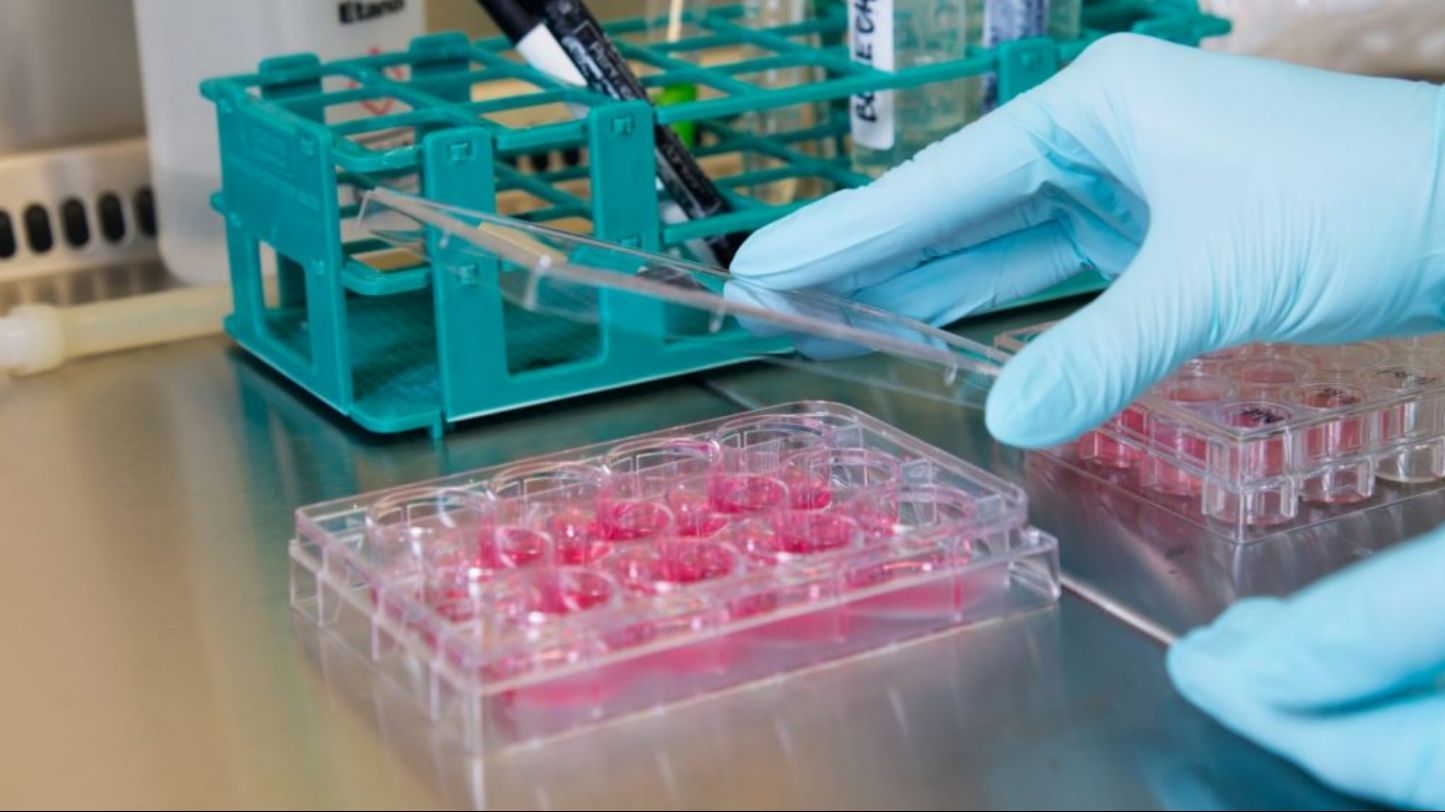
NU researchers are investigating the influence of the quality of the human microbiome on the development of age-related dementia
Alzheimer’s disease (AD) is a chronic neurodegenerative disorder characterized by progressive memory loss, drastic changes in personality and behavior, and in the latter stages the patients are unable to carry even simple daily activities. There is evidence that AD might be associated with bacteria residing in our intestine. In this regards, researchers from Nazarbayev University have begun studying the composition of the intestinal microbiome of patients diagnosed with AD. Similar studies are being conducted in the United States and in China.
As part of our study, samples of intestinal flora were collected from elderly people diagnosed with AD and mentally healthy individuals. ‘We are looking for a correlation between the composition of intestinal microflora and AD, as a potential marker for early diagnosis of this disease’ – reports Sholpan Askarova, a Leading researcher and the Head of the Laboratory of Bioengineering and Regenerative Medicine, PI “National Laboratory Astana”.
Until recently, it was believed that intestinal microbiome is involved in processes such as fermentation of carbohydrates, synthesis of vitamins, xenobiotic metabolism occurring exclusively in the intestines, and acts as a barrier to pathological bacteria. However, over the past 15 years, the functions of the intestinal microbiome have been revised. A direct relationship has been established between density and the composition of intestinal microflora with the development of a number of pathologies such as diabetes, obesity, cardiovascular diseases, which, in turn, are known risk factors for the development of AD.
It has been established that age, lifestyle, diet as well as place of residence play a big role in intestinal microfloral composition – comments Almagul Kushugulova, Leading researcher and the Head of the Laboratory of Human Microbiome and Longevity, PI “National Laboratory Astana”.
Data obtained from the study of laboratory animals suggest that bacteria that colonize the intestine can negatively impact the function of nerve cells and contribute to the development of AD. Clinical studies conducted at Chongqing Medical University (China) and the Alzheimer’s Disease Research Center (Wisconsin Alzheimer’s disease Research Center, USA) confirm these findings.
The World Health Organization (WHO) reports that the incidence of age-related dementia worsens every year and projects that by the year 2050 there will be a three-fold increase in the number of AD patients. AD affects approximately 10% of people aged between 65-75 years and 32% of the elderly aged 80 years and above. There is currently no accurate data in Kazakhstan on the number of elderly people suffering from dementia. However, based on the world statistical data and considering the population of Kazakhstan, it can be stipulated that not less than 200 000 elderly people could suffer from age-related dementia.
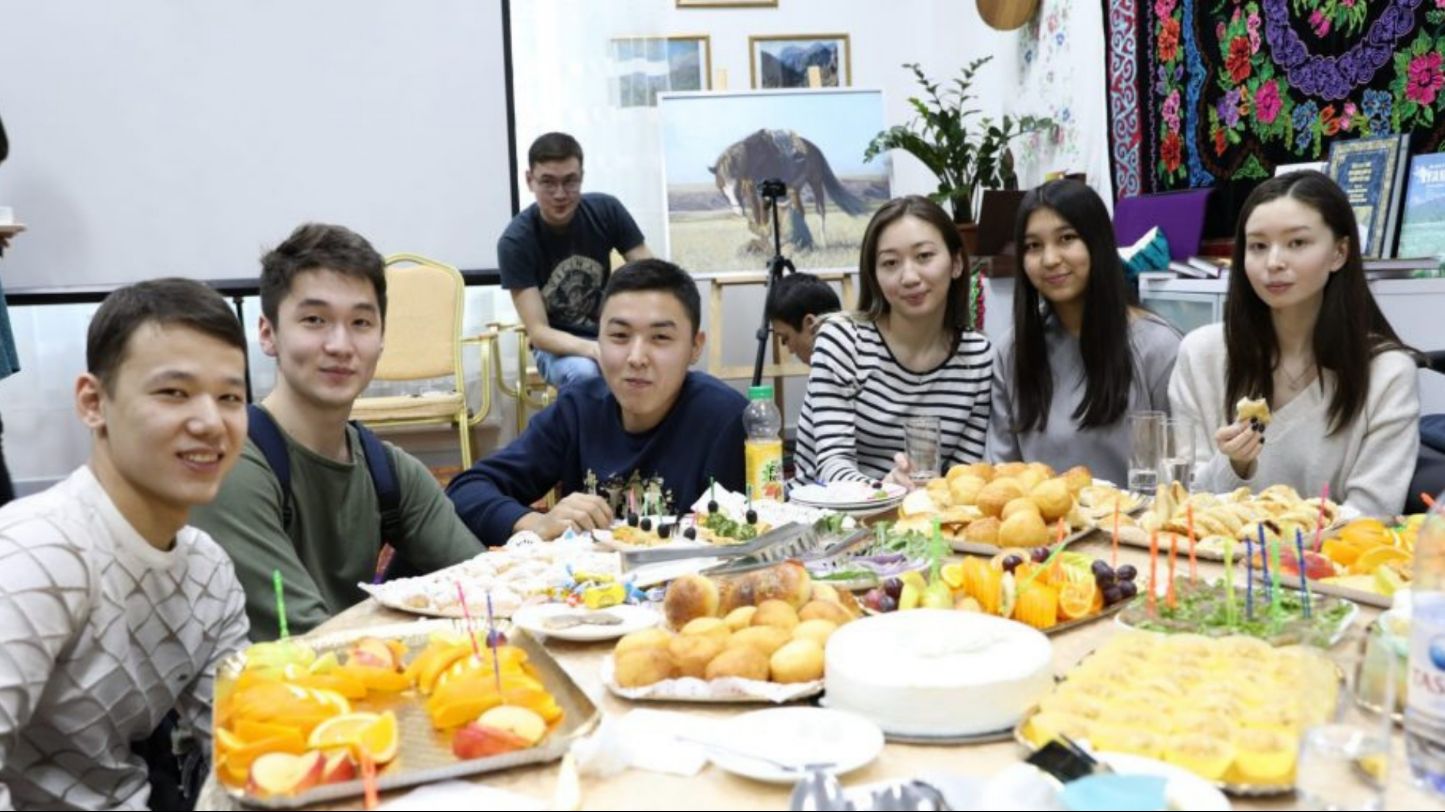
“Aq Zhailau” is a new place to explore Kazakh culture
The Kazakh Cultural Resource Room “Aq Zhailau” recently opened at Nazarbayev University. The opening of Aq Zhailau was a student-led initiative, made possible with the cooperation and support of the Academy of Innovative Intellectual Technologies and Nazarbayev University management.
The steppe holds an important place in Kazakh culture and imagination, it is not only the main source of wealth, but also symbolizes eternity and the dynamism of life. The steppe is also associated with freedom and creativity, endurance and patience, space and energy. When picking the name for the room it was important to capture these ideas in a phrase that would mean something in the Kazakh cultural code, and this is why the name “Aq Zhailau” was chosen.
The opening ceremony was attended by a wide range of guests including the NU Vice-President for Student Affairs and International Cooperation Kadisha Dairova, the Dean of the School of Humanities and Social Sciences Daniel Pugh, NU professors, graduates, students and employees.
In her welcoming remarks, Vice-President Kadisha Dairova said that this new room “will be a place to unite the whole community of Nazarbayev University: students, graduates and young professionals, teaching staff who want to learn about Kazakh traditions, customs and culture”.
Professor Gultas Kurmanbay, Director for NU Cultural Center “Rukhani zhangyru” noted how important this space is for preserving national identity and culture. A welcoming place to learn about culture and heritage can be helpful in the development of an individual’s personality, and in this respect, the value of this office, especially to the younger generation of Kazakhstan, cannot be overestimated. This space is always open to anyone who wants to know about the heritage of the Great Steppe.
“Aq Zhailau” guests will be able to see national decorations of a Kazakh home, play musical instruments, learn to play national games and read from a vast collection of Kazakh literature. The room is equipped to show films and listen to music. It is expected that the room will become a favorite meeting place for the university community – a platform for exchange of experience, discussion of ideas and initiatives. In “Aq Zhailau”, NU students, staff, teachers and guests will be able to hold exhibitions and literary evenings, learn the Kazakh language, read and discuss books, and watch videos about Kazakhstan.

NU community saved a highbred horse from slaughter
Right after the New Year holiday, the community of Nazarbayev University worked together to save a highbred horse named Talisman from being slaughtered. Support from the NU community made it possible to move Talisman to Astana from a village near Petropavlovsk, and he is now being trained to participate in a long-distance ride from Astana-Botai-Astana, that will take place this summer.
The story began when SHSS Postdoctoral Scholar, anthropologist Ulan Bigozhin was looking for horses suitable for this summer’s riding tour between Astana – Botai— Astana. Botai, a famous archaeological site associated with early horse domestication, is located on the border between the North Kazakhstan and Akmola oblasts. During this unique tour, participants plan to ride 900 km. from the capital city to Botai. Archaeologists believe that Botai is one of the potential sites for the earliest domestication of horses during the Eneolithic period, and that the horses domesticated at Botai are the ancestors of today’s Przewalski’s horse.
When asked about how he came to know about Talisman’s situation, Ulan Bigozhin had this to say: I was looking through Internet ads and found info about selling a horse for meat as ‘sogym’. I noted, that it was a highbred studhorse – a cross breed between The Vladimir Heavy Draft and The Orlov Trotter. Looking at the picture online, I was attracted to the horse’s beautiful color, point and special soft look. The horsebreeding world in Petropavl is not so big, so I could easily find more info about Talisman.
The former owner of Talisman kept him in the hippodrome in Petropvalovsk, and the horse used to be a favorite of the children there. Everyone was saying, that he was a gentle and obedient horse.
Then the owner sold him, and Talisman became a gregarious studhorse in the steppe. But eventually, Talisman started to experience health problems, so his new owner decided to fatten him up for a sale as sogym. Dr. Bigozhin sent the link advertising Talisman’s sale to his colleague, NU Assistant Professor Jenni Lehtinen, and she immediately decided to launch a campaign to save the horse from slaughter. The initiative launched by Lehtinen and Bigozhin attracted support from other colleagues and students. Through the generosity of the NU community, they were able to raise an amount sufficient for not only buying Talisman, but also to transfer him to Astana and put into the capital’s hippodrome. After arriving in Astana, a veterinarian examined Talisman and prescribed a treatment plan. Right now Talisman is feeling much better: he has lost the excess weight, which has improved his overall look, and has begun the physical training to prepare for this summer’s exciting ride to the site of his ancestors!
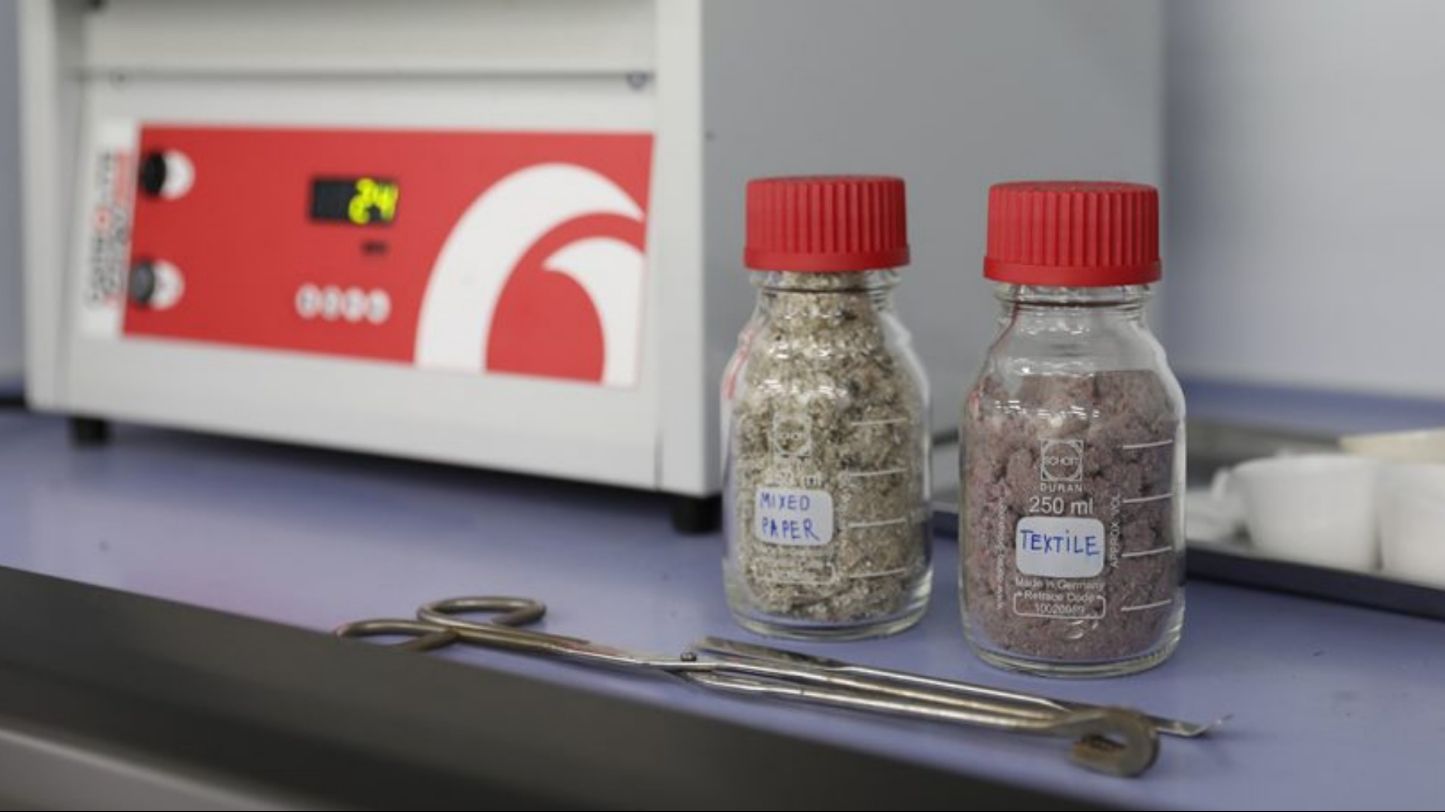
From garbage to alternative fuels: how to organize waste recycling in Astana?
Scientists at Nazarbayev University say that 30% of municipal solid waste in Astana could be recyclable, and another 10% of municipal solid waste potentially could be sorted to derived solid fuel for the city’s energy needs. These figures were obtained by a research group studying landfills in Astana for opportunities to obtain energy fuel from solid domestic waste.
“A lot of solid waste is disposed of on a daily basis, we wanted to explore if some of this waste could be processed as fuel to meet the municipal needs of the city, specifically, we were interested in the production of heat during the winter season,”- said the senior project manager, PhD Yerbol Sarbassov.
In the course of the experimental process, samples of the treated fuel were co-fired in a fluidized bed unit to study the combustion parameters with and without coal.
The researchers of the Laboratory of Green Energy and the Environment, National Laboratory Astana and the School of Engineering, NU concluded that the dry combustible residue from solid waste can be disposed of in two ways: by pyrolysis to produce syngas or co-firing in fluidized beds. The second option would be more effective for use in the small district boiler houses of Astana.
Scientists said that the composition of garbage varies, depending on the area of export. Thus they are extremely optimistic, emphasizing that the disposal of solid waste in Astana will have a positive impact on the ecological situation in the city, as well it will help to increase the service life of sanitary landfills for the disposal of solid waste.
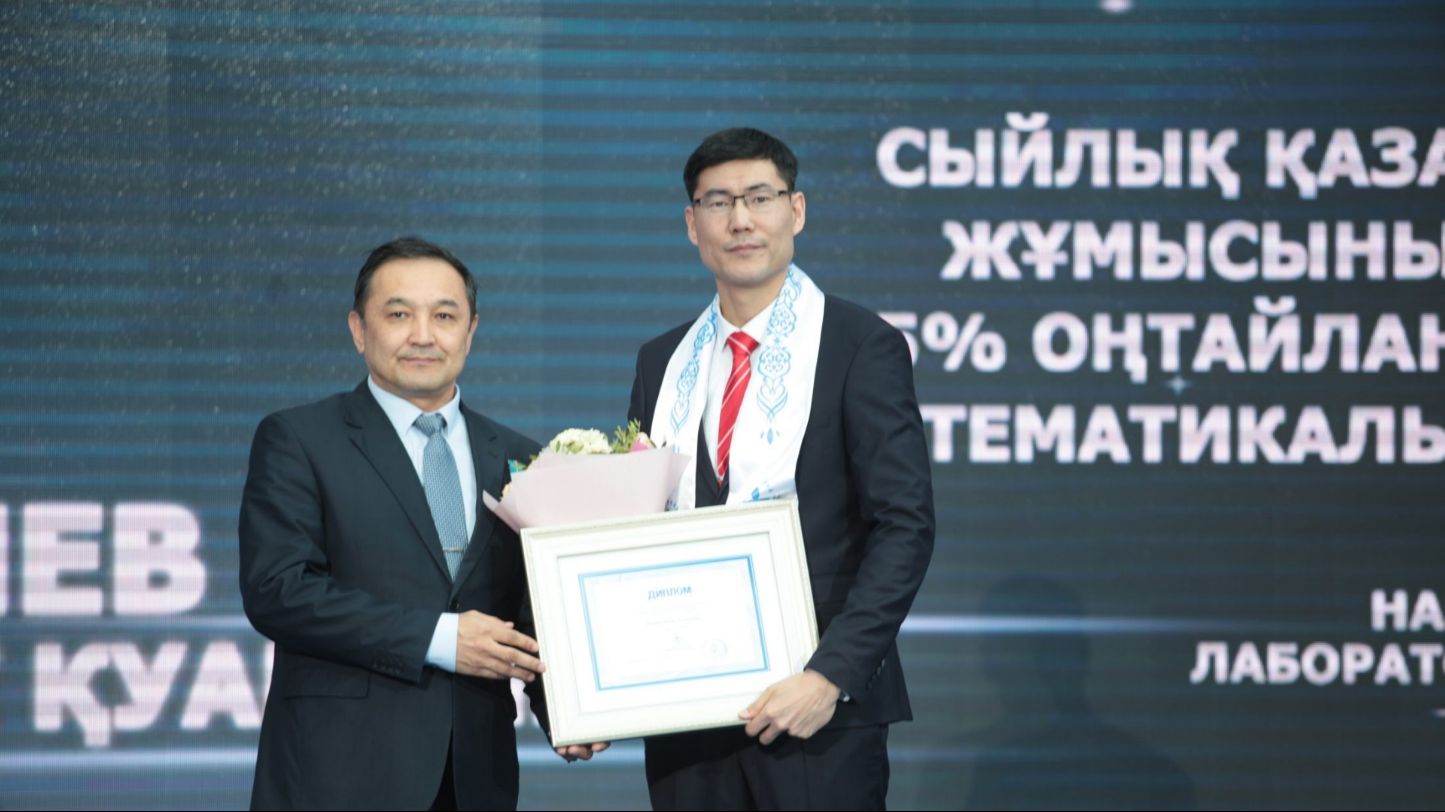
NU physical scientist awarded by the Foundation of the First President of the Republic of Kazakhstan – Elbasy
For the best research and achievements in the field of science and technology on the topic “Multilevel modeling of the electric power system” Nurkhat Zhakiyev, a physicist at Nazarbayev University, the winner of the “100 New Persons of Kazakhstan” competition, was awarded the prize of the Foundation of the First President of the Republic of Kazakhstan – Elbasy.
As part of his research project with the support of the MES RK, a team of scientists improved methods of mixed-integer linear programming to develop a computer model of the power system of the Republic of Kazakhstan. This new model has sped up the process of calculating the optimal load distribution across power plants, and this, in turn, increases the energy efficiency of the system.
“Within the grant from the Royal Academy of Engineering of UK, we developed a computer model of the Karaganda combined heat and power plant (CHPP), which was then implemented by the production and technical department. The developed CHPP model allows to increase the annual energy efficiency of CHPP due to optimization of load distribution between units and optimal maintenance planning” -says Nurkhat Zhakiyev, Ph.D. in physics, researcher of the Nazarbayev University Provost Office.
At the beginning of this project, a team of scientists and student interns from School of Engineering of NU visited various workrooms of the Karaganda CHP plant: turbine, boiler house, water treatment, chemical, fuel-transportation, and ash handling, and others. According to students of the School of Engineering, they had a unique opportunity to undergo practical training at many levels – starting with production and going all the way through the implementation of the model.
The results of this research projects were demonstrated at the international EXPO-2017 in Astana as an interactive touch-screen system and published in peer-reviewed journals: “Energy Procedures”, “The Energy” (Impact Factor: 4.52) and “Energy Conversion and Management” (Impact Factor: 5.59). In addition, the team of authors obtained 3 intellectual property copyrights for the developed programs.
NU Student Clubs: Volunteers Club
CAC NEWSLETTER
Dear NU community,
We are happy to present the latest issue of the CAC News Digest.
Click here
© 2019 Press Office
